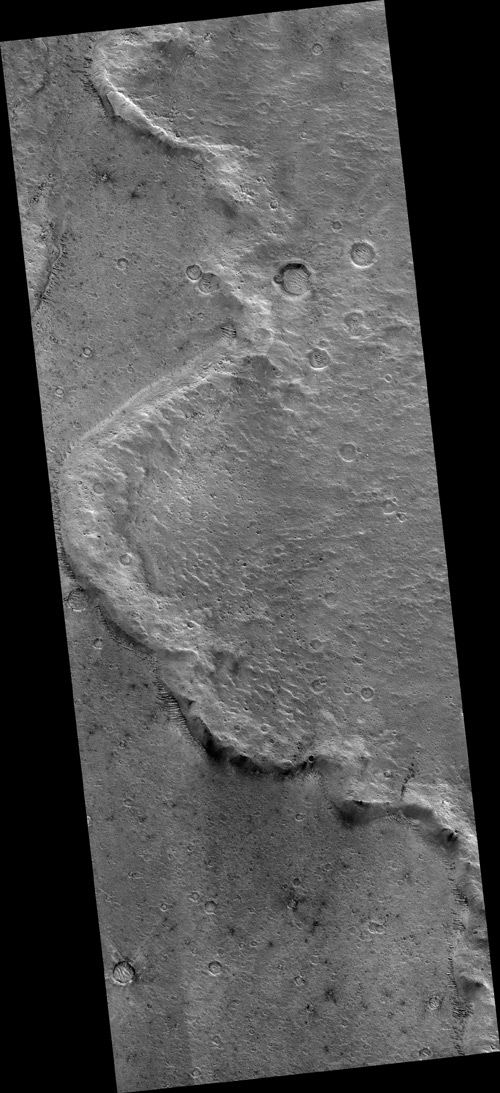|
|
 |
| Press Release Images |
 |
| Return to Press Release Images index |

|
|
Larger JPG (5.1 MB)
|
12-Nov-2009
|
|
Distal Rampart of Crater in Chryse Planitia
Impact craters on Mars are kind of neat. Many of them look very different than impact craters seen on Earth's moon or Mercury. Fresh lunar and Mercurian craters have ejecta blankets that look a bit rough near the crater rims; around larger craters, long rays or chains of secondary craters radiate away from the crater rims. Some Martian craters are similar to these craters, but Mars also has a high proportion of craters with forms not found on the moon or Mercury: rampart craters.
Rampart craters, also called fluidized-ejecta craters, have ejecta blankets that appear lobate, or rounded, in plan view, and end in low ridges or ramparts. An example of a such a rampart is the ridge in this image from the High Resolution Imaging Science Experiment (HiRISE) camera on NASA's Mars Reconnaissance Orbiter. Here you see the rampart at the edge of an ejecta blanket that comes from an approximately 16-kilometer-diameter (10-mile-diameter) crater, about 16 kilometers (10 miles) to the east.
For years there has been a debate about whether these lobes and ramparts were formed by ejecta interacting with the thin Martian atmosphere, or whether they formed because volatiles (such as water or ice) in the subsurface were incorporated into the ejecta material excavated by the impact. The common consensus is now in favor of the volatile hypothesis. Because of this, rampart craters can be used to indicate the past presence of water or ice in the Martian crust.
This image covers a swath of ground about 6 kilometers (4 miles) wide, centered at 17.2 degrees north latitude, 311.6 degrees east longitude. It is one product from HiRISE observation ESP_14417_1975, made on Aug. 23, 2009. Other image products from this observation are available at http://hirise.lpl.arizona.edu/ESP_014417_1975.
Image Credit: NASA/JPL-Caltech/University of Arizona
|
|
|
JPL Image Use Policy
|